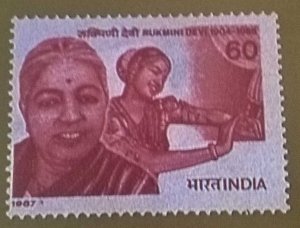 |
|
 |
|
| Pampa, known as adikavi or the first poet of Kannada
literature served in the court of Arikesari II in 8th century. His two major works Adipurana and Vikramarjuna Vijaya
are well known. Pampa narrates the dance sequences with all the
technical terms used in Natya Shastra with great enthusiasm and
effectiveness. The two instances in Adipurana elaborately
describe dance and music, the sequences where at the birth of
Vrsabhadeva, Indra shared the joy in organizing the dance of devanganas,
the celestial nymphs. They began the dance movements by using 32
kinds of flowers. 32 dancers formed a design of flowers and petals
in a circle and performed the movements. Here the word Chitrapatra is
used. There is a technique of dance known as Chitranatya which is now
popular in Kuchipudi style. Indra stood for the commencement of
the dance in visakha sthana, the position indicating the horse
riding or while using the weapons in combat and he danced with karanas
and angaharas. By the term natyarasam, Pampa indicates the rasas
performed in the dance of joy. (‘Classical dance heritage of Karnataka’ edited by Dr. Choodamani Nandagopal, chapter ‘Dance heritage of Karnataka,’ Dr. Choodamani Nandagopal, 2012) |
| After Pampa, Ponna is another noted Kannada writer. If
Pampa is credited to be the first to introduce dance and music with
great effect in literary works, Ponna is the promoter and successful
narrator of the episodes where he with great ease used dance and music
sequences to embellish his literary power in his works. In Santipurana,
Ponna has vividly described the dance of the apsaras and Devendra. The
apsaras exhibited the sukumara natya (lasya) by using suitable karanas
and angaharas. In the 10th chapter, Ponna describes the dance sequence
directed by Indra of 32 dancers who formed a semicircle in the shape of a
pearl necklace. They also drew color pictures by their feet with the
help of flowers (as described by Pampa in Adipurana), that is
chitrapatra. It appears that a dance pattern performed by 32 members
standing in different designs drawing colorful patterns stamping lightly
on the flowers was very popular in the courts of Chalukyas and
Rashtrakutas. (‘Classical dance heritage of Karnataka’ edited by Dr. Choodamani Nandagopal, chapter ‘Dance heritage of Karnataka,’ Dr. Choodamani Nandagopal, 2012)  (Courtesy ‘Dances of the world on postage stamps,’ Alkis Raftis) |